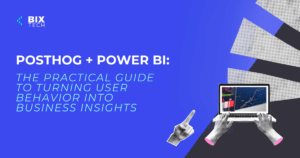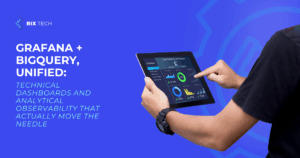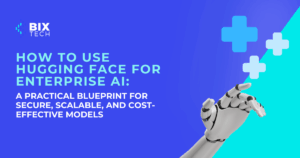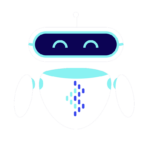Your Comprehensive Roadmap to Becoming a Full Stack Developer

Sales Development Representative and excited about connecting people
If you’re interested in a technology career that offers versatility, high demand, and the ability to shape a project from start to finish, full stack development should be at the top of your list. As businesses of all sizes continue their digital transformation, full stack developers have become some of the most sought-after professionals in the IT sector. Whether your goal is to join an in-house team or offer software development services as an independent consultant, mastering both front end and back end development unlocks countless opportunities.
Curious about what it really takes to become a full stack developer? Let’s break down the role, the qualifications you’ll need, the essential learning path, and the skills (both technical and soft) that set successful developers apart.
What Is a Full Stack Developer?
At its core, a full stack developer is a dynamic web developer or software engineer who is skilled in both front end and back end technologies. The term “full stack” highlights their ability to work across every layer of a digital application—everything the user sees, as well as the behind-the-scenes logic, databases, and server infrastructure.
This versatility makes full stack developers vital contributors on any tech project, capable of bridging the gap between user experience and system performance. In practice, their responsibilities are wide-ranging and can be tailored to the needs of each team or project.
Key Responsibilities of a Full Stack Developer
Front End Responsibilities
- Designing User Interfaces: Creating engaging, accessible, and responsive interfaces using HTML, CSS, and JavaScript, often leveraging frameworks like React.
- Optimizing Experience: Ensuring applications perform well across different browsers and device types.
- User-Centric Thinking: Keeping the end user’s needs front and center throughout the development process.
Back End Responsibilities
- Server-Side Logic: Building robust server logic using languages like Python, Java, or Ruby.
- Database Management: Designing and maintaining both relational (SQL) and non-relational (NoSQL) databases.
- Security and Authorization: Architecting systems that keep data secure and manage user permissions efficiently.
Bridging the Stack
- API Development: Creating and integrating APIs that seamlessly connect the front end and back end.
- Testing and Debugging: Proactively identifying and resolving bugs or performance bottlenecks.
- Collaboration: Working closely with cross-functional teams—including designers, QA specialists, and project leaders—to ensure cohesive solutions.
It’s important to note that while these responsibilities are common, every organization and project will have its own unique requirements. Flexibility and adaptability are key traits for anyone pursuing this career path.
Do You Need a Degree to Become a Full Stack Developer?
While a university degree in computer science, software engineering, or a related field can certainly give you a competitive edge, it’s not always a strict requirement. There are several pathways to launching your full stack career:
The University Route
Traditionally, many developers begin with a bachelor’s degree, gaining a solid foundation in theory, algorithms, and system architecture. This route is especially helpful if you’re aiming for positions at larger tech companies or want to build a broad network.
Bootcamps and Intensive Courses
Coding bootcamps have become a popular, fast-track option for aspiring developers. These programs focus on practical, hands-on training and typically last from a few months to a year. Costs can vary widely (from $4,000 to $22,000 in the US), and some even offer job placement guarantees. If you’re considering this route, be sure to research each program’s curriculum and outcomes to find the best fit for your goals and budget.
The Self-Taught Path
Many successful full stack developers are self-taught, using free or low-cost online resources to master programming languages and development tools. While this approach requires discipline and self-motivation, it’s a flexible and affordable way to build your skills. To gain real-world experience, consider starting with internships or junior developer roles.
Regardless of your chosen path, a commitment to continuous learning is essential—technology evolves quickly, and staying up to date is key to long-term success. For more insights on how AI and big data are changing the software landscape, check out this guide to the data science business revolution.
The Full Stack Developer Learning Path: Essential Programming Languages & Technologies
Full stack development is all about mastering a range of technical skills. Here’s a breakdown of the core technologies and languages you’ll need:
Front End Development
- HTML & CSS: The building blocks of web development—every developer starts here.
- JavaScript: Absolutely essential for creating interactive, dynamic websites.
- Modern Frameworks: React.js, Angular, or Vue.js help you develop complex user interfaces efficiently.
Version Control & Collaboration
- Git & GitHub: Mastering version control is non-negotiable; GitHub also opens doors to collaborative, open-source projects.
- Visual Studio Code & GitHub Copilot: These tools streamline coding and support smarter development.
Back End Development
- JavaScript/Node.js: Use JavaScript outside the browser and build scalable server-side applications.
- Python, Ruby, or C#: Becoming proficient in at least one additional back end language is highly recommended.
Database Management
- SQL: Vital for working with structured, relational databases.
- NoSQL: Learn MongoDB or similar technologies for flexible, non-relational data storage.
Advanced Skills
- React.js & TypeScript: These technologies help you create more robust, maintainable applications.
- API Design: Understanding how to build and integrate RESTful or GraphQL APIs is a must.
Interested in how mastering these skills can lead to innovative business applications? Explore the power of language models in enterprise software.
Critical Soft Skills for Full Stack Developers
While technical prowess is crucial, soft skills are what truly help full stack developers thrive in modern teams:
- Problem-Solving & Logical Thinking: Tackling complex challenges, especially when integrating disparate systems.
- Communication & Teamwork: Collaborating effectively with developers, designers, and stakeholders.
- Time Management: Balancing multiple tasks and meeting tight deadlines, especially on long-term projects.
- Adaptability: Staying agile in a field that’s always changing—new frameworks, tools, and best practices emerge constantly.
A Glimpse at Full Stack Developer Career Progression
Starting as a junior developer, you’ll gradually take on more complex projects and responsibilities. With time and proven expertise, you can advance to senior developer, technical lead, or even architect roles. Many full stack professionals also transition into specialized fields such as cloud computing, AI, or data engineering, which are transforming modern businesses (see how data engineering is shaping industry).
Final Thoughts: Is Full Stack Development Right for You?
Becoming a successful full stack developer means embracing a mindset of curiosity, collaboration, and continuous learning. Whether you’re building user interfaces, architecting server logic, or managing databases, your skills will have a direct impact on how people interact with technology every day.
If you’re ready to start your journey, choose the learning path that fits your style, invest in both technical and soft skills, and stay open to new possibilities. The world of full stack development is vast, rewarding, and always evolving—your next big opportunity could be just a project away.










